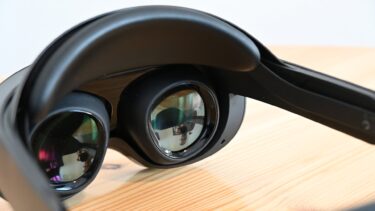Eye tracking will one day be standard on Quest headsets, says Meta CTO

Currently, only the Meta Quest Pro offers eye tracking. But one day, the technology will be "part of the base package" of every Quest headset.
That's what Meta's CTO Andrew Bosworth said in his latest Q&A on Instagram.
Meta is a big fan of eye-tracking, he said, and has been experimenting for a long time with 2D user interfaces that can be controlled using eye and hand tracking. Something that already works very well with Apple Vision Pro, according to early press reports.
But Meta is committed to affordable hardware and has no interest in building a headset that costs thousands of dollars. And eye tracking is a cost factor, Bosworth confirms.
Meta continues to work on making the technology more efficient and affordable so that one day it will be built into every Meta headset. He couldn't say when that would be, but eventually it would be part of the "basic package".
Eye tracking is a core technology
Eye tracking has many benefits for VR headsets. It enables more realistic social interactions and eye contact in virtual and mixed reality, can improve rendering performance through foveated rendering, and, as Bosworth pointed out, can enable entirely new interface paradigms.
So far, only Quest Pro offers eye-tracking, at a cost of $1,000. The benefits of foveated rendering on the device are currently modest, and Bosworth himself suggested two years ago that foveated rendering on standalone headsets wasn't yet a game changer due to the many limitations of such devices.
You can read Bosworth's full answer below:
"We're such a big fan of eye tracking, obviously. We were thrilled to get it into the Quest Pro, and it's still one of my favorite features of the Quest Pro, especially because I do spend a lot of time in workrooms meetings on that device.
AdAdWe have really been testing it for a long time as a 2D navigation UI paradigm in conjunction with hands. And so we've known this for a long time. We've been pursuing this for a long time.
It is just a trade-off on cost and weight and obviously, extra sensors, against the product. So we're really focusing on continuing to be able to deliver it at high degrees of precision in more efficient architectures, both computationally and price standpoint, so we can make it into every single headset.
I can't tell you when it's going to happen. Every single headset is kind of its own recipe, but at some point yes, it will be part of the base package. I'm not sure exactly when, though."
Note: Links to online stores in articles can be so-called affiliate links. If you buy through this link, MIXED receives a commission from the provider. For you the price does not change.